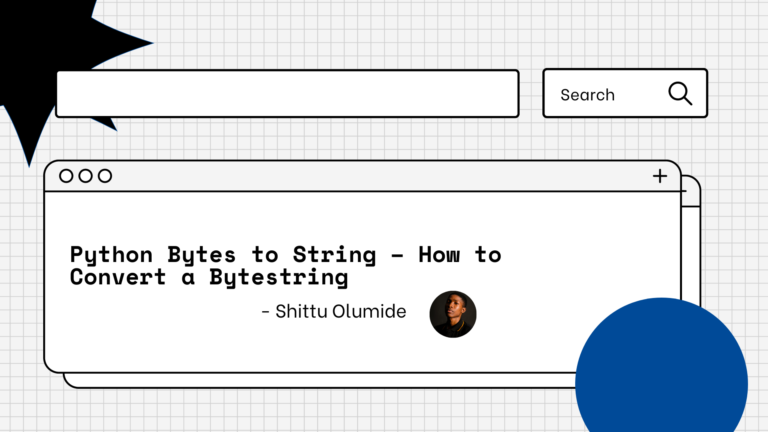Have you ever wondered how to convert an integer to a binary string in Python?
We explore various methods to achieve this conversion, including using the bin() function, the format() function, string formatting techniques, f-strings, and even converting without built-in functions.
We will walk through examples of converting both positive and negative integers to binary strings using these different methods. By the end of this article, you will have a comprehensive understanding of how to convert integers to binary strings in Python.
Let’s dive in!
Key Takeaways:
Contents
- 1 Key Takeaways:
- 2 Introduction
- 3 Using bin() Function
- 4 Using format() Function
- 5 String Formatting Method
- 6 Using f-string in Python
- 7 Converting Without Built-in Functions
- 8 Conclusion
- 9 References
- 10 Frequently Asked Questions
- 10.1 What is the purpose of the bin() function in Python?
- 10.2 How do I use the bin() function to convert an integer to a binary string in Python?
- 10.3 Can I use the bin() function on non-integer values in Python?
- 10.4 How can I remove the ‘0b’ prefix from the binary string returned by the bin() function?
- 10.5 Is the bin() function limited to converting integers to binary strings?
- 10.6 Are there any limitations to the size of the integer that can be converted with the bin() function in Python?
2. The format() function can also be used for integer to binary string conversion, offering more control over the output format.
3. There are other techniques for converting an integer to binary string without using built-in functions, such as using string formatting or f-strings.
Introduction
Understanding how to convert an integer to a binary string in Python involves exploring various functions and techniques.
One common approach is using the built-in bin() function in Python, which can directly convert an integer to a binary string. The format() function allows for more control over the binary string representation, enabling padding with zeros or specific formatting. By utilizing these functions, you can efficiently handle integer to binary string conversions in your Python programs.
Overview of converting an integer to a binary string in Python
Converting an integer to a binary string in Python involves representing numeric values in binary form, accounting for positive and negative integers using Two’s complement notation.
‘ to obtain the binary string.
The scenario becomes more intriguing when dealing with negative numbers. Python’s Two’s complement notation is pivotal here, as it allows for a consistent representation of negative values in binary form.
Understanding Two’s complement involves flipping all bits and adding one to the least significant bit, reflecting the negative counterpart of a positive integer.
”
}
In Python, the basic idea is to use the binary conversion methods provided by the language to transform integers into their respective binary representations. For positive integers, this process is relatively straightforward – you can utilize the built-in function ‘{:b’ to obtain the binary string.
The scenario becomes more intriguing when dealing with negative numbers. Python’s Two’s complement notation is pivotal here, as it allows for a consistent representation of negative values in binary form.
Understanding Two’s complement involves flipping all bits and adding one to the least significant bit, reflecting the negative counterpart of a positive integer.
Using bin() Function
The bin() function in Python provides a straightforward method for converting integers to binary strings, accommodating both positive and negative numbers.
When using the bin() function, passing a positive integer as an argument will return a binary string prefixed with ‘0b’. For example, bin(5) would output ‘0b101’.
On the other hand, when a negative integer is provided to bin(), Python employs a two’s complement representation to convert it to binary. For instance, bin(-5) yields ‘-0b101’ as the result. This method ensures that negative integers are appropriately represented in binary format.
Explanation of the bin() function for integer to binary string conversion
The bin() function in Python is specifically designed to convert integer values into binary strings, preserving the binary representation of both positive and negative integers.
When you pass a positive integer to the bin() function, it returns a binary representation prefixed with ‘0b’, such as ‘0b10101’. This prefix indicates that the output is a binary string. When dealing with negative numbers, the function employs a technique known as two’s complement to represent them in binary form.
The two’s complement representation ensures that the most significant bit denotes the sign of the number, enabling the binary representations of negative integers to be accurately interpreted by the program. This makes the bin() function a crucial tool for binary operations and manipulations, providing a seamless way to work with binary data in Python.
Example 1: Converting a positive integer to binary string using bin() function
Let’s exemplify the usage of the bin() function by converting a positive integer to its binary string representation.
For instance, if we consider the positive integer 15, to convert this to a binary string, we will pass this value as an argument to the bin() function in Python. The conversion process involves representing the decimal number 15 in binary form, which is 1111. Therefore, after executing bin(15), the resulting binary string output would be ‘0b1111’. This showcases how the bin() function conveniently transforms positive integers into their binary equivalents.
Output of Example 1
The output of Example 1 demonstrates the successful conversion of the positive integer to its corresponding binary string using the bin() function.
When invoking the bin() function on a positive integer, it returns a string with a ‘0b’ prefix, representing a binary number. For instance, if we pass the integer 10 to the bin() function, the output would be ‘0b1010‘. This string signifies that the binary representation of the decimal number 10 is ‘1010’. It is crucial to note that the ‘0b’ prefix indicates that the result is a binary string in Python.
Example 2: Converting a negative integer to binary string using bin() function
Explore the application of the bin() function in converting a negative integer to its binary string representation to understand how negative numbers are handled in binary form.
In terms of converting negative integers to binary strings using the bin() function in Python, a key point to note is that the resulting binary string will include a negative sign and a prefix indicating the type of the integer. For example, converting -5 to binary using bin(-5) will return ‘-0b101’, translating to a negative number with a prefix of ‘-0b’. This allows us to easily distinguish between positive and negative values in binary representation, aiding in proper interpretation and manipulation of binary data.
Using format() Function
The format() function offers an alternative approach to converting integers to binary strings by leveraging string formatting techniques for enhanced customization.
‘.format(number) ensures that the binary string will have 8 characters, left-aligned, and zero-padded if needed.
The format() function allows for the inclusion of additional formatting options like grouping using commas or specifying the case of the output (upper or lower). This flexibility makes it a powerful tool for customizing how integers are represented in binary form.
”
}
One of the advantages of using the format() function is the ability to specify the format of the output binary string. You can control aspects such as the number of digits, padding, and alignment within the binary representation. For example, using ‘{:08b’.format(number) ensures that the binary string will have 8 characters, left-aligned, and zero-padded if needed.
The format() function allows for the inclusion of additional formatting options like grouping using commas or specifying the case of the output (upper or lower). This flexibility makes it a powerful tool for customizing how integers are represented in binary form.
Explanation of the format() function for integer to binary string conversion
The format() function in Python facilitates integer to binary string conversion through advanced string formatting techniques, enabling precise control over the output format.
‘, the function converts integers to binary strings efficiently. For instance, calling format(42, ‘{:b}’) would return ‘101010’, representing the binary equivalent of the integer 42. This allows programmers to generate custom binary outputs easily, tailoring the representation according to specific requirements.
”
}
When using the format() function, one can specify the desired binary representation format using the string formatting syntax. By incorporating format specifiers like ‘{:b}’, the function converts integers to binary strings efficiently. For instance, calling format(42, ‘{:b}’) would return ‘101010’, representing the binary equivalent of the integer 42. This allows programmers to generate custom binary outputs easily, tailoring the representation according to specific requirements.
Example 3: Converting an integer to binary string using format() function
Demonstrate the application of the format() function by converting an integer to a binary string with tailored formatting options for a specified output format.
‘.format(10), which results in ‘1010’ as the binary output. By incorporating this technique, you can achieve customized formatting of integers into binary strings, enabling greater flexibility in the presentation of numerical data.
”
}
For instance, when converting the integer 10 to a binary string, you can utilize the format() function along with the ‘b’ format specifier to represent the number in binary form. This can be achieved by employing the syntax ‘{0:b}’.format(10), which results in ‘1010’ as the binary output. By incorporating this technique, you can achieve customized formatting of integers into binary strings, enabling greater flexibility in the presentation of numerical data.
”
String Formatting Method
String formatting offers a flexible method for converting integers to binary strings through customized formatting options, enhancing readability and presentation.
This technique allows developers to specify the desired width, alignment, padding, and precision of the binary output, resulting in neatly organized and visually appealing representations. By utilizing placeholders and format specifiers in conjunction with the format() method, programmers can exert control over how the binary data is displayed.
Explanation of string formatting technique for integer to binary string conversion
String formatting techniques provide a structured approach to converting integers to binary strings with enhanced visual representation and readability.
One of the key benefits of utilizing string formatting techniques for integer to binary string conversion is the ability to control the output format, ensuring consistency and accuracy. By specifying the desired format, such as adding leading zeros or defining the width of the binary representation, the resulting binary strings become more visually appealing and easier to interpret.
These techniques offer flexibility in displaying binary data, allowing for customization based on specific requirements. Whether it is for representing memory addresses, encoding schemes, or bitwise operations, the clear and organized presentation of binary strings enhances understanding and analysis in various computational tasks.
Example 4: Converting an integer to binary string using string formatting
Illustrate the utilization of string formatting for converting an integer to a binary string, showcasing the visual enhancements and readability improvements offered by this approach.
‘ format specifier in Python. This specifier enables the seamless transformation of numerical values into their binary equivalents with ease. For example, if you have an integer value of 10, applying the ‘{0:b}’ format specifier would yield the binary representation ‘1010’. This method not only simplifies the conversion process but also leads to a visually structured and easily interpretable output.
”
}
One common method to convert an integer to a binary string is by using the ‘{0:b’ format specifier in Python. This specifier enables the seamless transformation of numerical values into their binary equivalents with ease. For example, if you have an integer value of 10, applying the ‘{0:b}’ format specifier would yield the binary representation ‘1010’. This method not only simplifies the conversion process but also leads to a visually structured and easily interpretable output.
“}
Output of Example 4
The output of Example 4 exemplifies the visually enhanced and well-formatted binary string representation achieved through the application of string formatting techniques.
By utilizing appropriate formatting methods, the binary string output is not only more visually appealing but also significantly easier to read and interpret. The structured alignment and spacing in the formatted binary representation improve the overall clarity and organization, making it simpler for users to identify patterns and spot errors. This enhanced presentation of binary data aids in enhancing the user experience and understanding of the information conveyed.
Using f-string in Python
Employing f-strings in Python provides a concise and expressive method for converting integers to binary strings, offering seamless integration of variables and formatting options.
When working with f-strings, the process of converting an integer to a binary string involves placing the integer within curly braces preceded by a colon and ‘b’ for binary formatting. This approach allows for quick transformation without the need for additional conversion functions or complex syntax. By utilizing f-strings, Python developers can effortlessly handle various numeric data types and customize the output format according to specific requirements.
Explanation of f-string for integer to binary string conversion
f-strings in Python serve as a powerful tool for converting integers to binary strings through streamlined variable incorporation and advanced string formatting capabilities.
One of the key advantages of using f-strings for integer to binary string conversion is the ease with which variables can be inserted directly into the string without the need for complex concatenation or formatting methods. This not only simplifies the code but also enhances readability and maintainability. F-strings are highly efficient in handling string formatting tasks, offering a concise syntax that allows for seamless integration of variables within the string. This makes them especially useful in situations where quick and accurate conversion of integers to binary strings is required.
Example 5: Using f-string formatting for integer to binary string conversion
Demonstrate the application of f-string formatting by converting an integer to a binary string with dynamic variable insertion and precise formatting control.
. This will translate the decimal value 42 into its binary equivalent. The beauty of f-strings lies in their ability to seamlessly incorporate variables into the formatting string, ensuring a straightforward and efficient conversion process.
”
}
For example, suppose you have an integer num = 42 and you want to represent it in binary form. With f-string formatting, you can easily achieve this by using the format specifier for binary conversion: {num:b}. This will translate the decimal value 42 into its binary equivalent. The beauty of f-strings lies in their ability to seamlessly incorporate variables into the formatting string, ensuring a straightforward and efficient conversion process.
Converting Without Built-in Functions
Exploring alternative methods for converting integers to binary strings in Python without relying on built-in functions involves leveraging recursive solutions, bitwise operations, and concise coding techniques.
One effective way to achieve this is by employing a recursive function that continuously divides the integer by 2 and appends the remainder until reaching 0. This method effectively breaks down the conversion process into smaller steps.
Bitwise operations are commonly used in binary conversions. By manipulating individual bits of the integer using operators like
For those seeking succinct solutions, there are clever one-liners that can convert integers to binary strings in Python, optimizing code readability and performance.
Techniques for converting integer to binary string without built-in functions
Implementing custom techniques for integer to binary string conversion in Python entails employing recursive algorithms, bitwise operators, and manual conversion methods for decimal to binary representation.
One popular method for converting integers to binary strings without using built-in functions is through recursive algorithms. This approach involves breaking down the integer into its binary representation by continuously dividing the number by 2 and recording the remainders. The process is repeated until the quotient becomes 0.
- Another effective technique is utilizing bitwise operators to perform the conversion. By manipulating bits using operators such as
- For those seeking a more manual approach, the process of converting a decimal number to binary involves dividing the number by 2, recording the remainders, and then creating the binary string in reverse order from the collected remainders.
Example 6: Converting integer to binary string without built-in function
Illustrate the process of converting an integer to a binary string without built-in functions through a specific example showcasing recursive algorithms or bitwise operations.
For instance, let’s consider converting the decimal integer 23 to a binary string using bitwise operators. To start, we set up a variable to store the binary representation. Initially, it is an empty string. We then iterate through the integer by performing bitwise AND operations with 1 to extract the least significant bit. Each extracted bit is appended to the beginning of the binary string.
This process continues by shifting the bits of the integer to the right until the integer becomes 0. Through this mechanism, we derive a binary string representation of the decimal integer 23: 10111.
Conclusion
Mastering the art of converting integers to binary strings in Python requires a thorough understanding of various techniques, functions, and conversion methods.
Understanding the bitwise operators such as AND, OR, and XOR is crucial for manipulating and converting integers to binary strings efficiently. Utilizing the built-in functions like bin() for simple conversions and custom algorithms for complex scenarios can enhance the conversion process. It is essential to grasp the concept of positional notation and apply it accurately through calculations to ensure the binary representation is correct. Practical examples and step-by-step walkthroughs can help solidify these concepts and enable programmers to seamlessly perform integer to binary string conversions in Python.
References
For further information on integer to binary string conversion in Python and related functions, refer to the official Python documentation and additional recommended sources.
Understanding the process of converting integers into binary strings in Python can be a valuable skill for programmers dealing with data representation. The Python documentation provides detailed explanations and examples to help you grasp the concepts involved. Websites like GeeksforGeeks and tutorials from Real Python can offer practical insights and step-by-step guides on implementing integer to binary string conversion in Python.
- Official Python Documentation
- GeeksforGeeks – Integer to Binary String Conversion
- Real Python – Understanding Data Types in Python
Frequently Asked Questions
What is the purpose of the bin() function in Python?
The bin() function in Python is used to convert an integer into a binary string. This is useful when working with binary data or performing bitwise operations.
How do I use the bin() function to convert an integer to a binary string in Python?
To use the bin() function, simply pass in the integer you want to convert as an argument. For example, bin(10) will return the binary string ‘0b1010’.
Can I use the bin() function on non-integer values in Python?
No, the bin() function can only be used on integers in Python. Attempting to pass in a non-integer value will result in a TypeError.
How can I remove the ‘0b’ prefix from the binary string returned by the bin() function?
To remove the ‘0b’ prefix, you can use string slicing to remove the first two characters of the returned string. Alternatively, you can use the format() function to convert the binary string to a string without the prefix.
Is the bin() function limited to converting integers to binary strings?
No, the bin() function can also convert other numeric types, such as floats and complex numbers, to binary strings in Python. However, the result may not be useful for bitwise operations.
Are there any limitations to the size of the integer that can be converted with the bin() function in Python?
Yes, the bin() function in Python has a limit for the size of the integer that can be converted. If the integer is too large, the function will raise an OverflowError.





